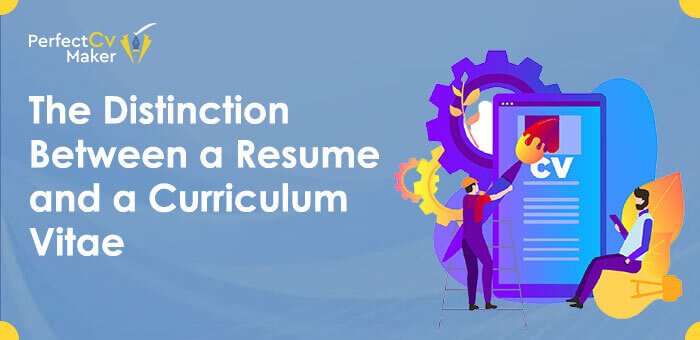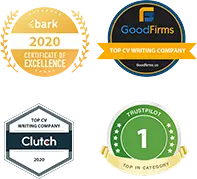Now, we are about to enter a whole new business period. Various huge corporations are striving to identify the top individuals for their companies. However, when investigating this, we came across a few that were popular among users. And they were all talking about the differences between a resume and a CV, so we decided to make this our topic for today.
As a result, with the help of our team members. We were able to obtain the essential data, which we believe our readers would enjoy reading. The quantity, what is contained, and what each is mostly used for are the key distinctions between someone’s resume and a curriculum vitae (CV). A resume and a CV are not frequently convertible into application forms, even though they are both used in open positions.
What’s the Difference?
Now, as we were going through different references, we had seen that users were trying to figure out the difference between a CV and a resume. So in this paragraph, we will be telling you the differences between a CV and a resume. In the U.s, most applications are competence-based: they are better marketing papers designed to highlight a participant’s talents, significant accomplishments, and professional experience to the best advantage. Curriculum vitae in the U.S. is are professional certification, presenting a detailed (and quite often lengthy) summary of one’s qualifications, certificates, strong academic background, and networking opportunities and affiliations when applying for work in academics, knowledge production, and medicine.
What is a Curriculum Vitae?
An academic record (CV) is a document that describes previous work experience and expertise. CVs for entry-level applicants are normally lengthier than resumes, tend to range from three to four pages. CVs for mid-level individuals with a lot of publications are usually substantially longer-winded. CVs are longer than resumes and contain additional information, especially about one’s academic and research history. A curriculum vitae summary is a simplified version of a complete curriculum vitae that is one to two pages long.
A CV summary is a means to express one’s abilities and qualifications quickly and succinctly. If you want your curriculum vitae to be well-designed, then you can also check Professional resume writing services. When a considerable pool of applications is expected, significant firms may first request a one-page CV summary.
What is Added in a Curriculum Vitae?
Name, contact details, graduation, abilities, and accomplishments should all be included in your academic record. A CV comprises academic research experience, publishing, grants and scholarships, professional associations and certifications, awards, as well as other credentials required for the role you’re applying for, in addition to the essentials.
What is a Resume?
A CV is a description of your educational background, job experience, qualifications, and other achievements and talents. Optional components include a CV aim, and a professional summary statement. A resume’s content should indeed be limited to a bare minimum. A CV is usually one page long. However, it might be two pages long in rare cases. There are several different sorts of resumes, including chronological, functional, and hybrid resumes. Just choose a template that seems to be appropriate for the position you are applying for.
Writing Tips for CVs and Resumes
There seem to be a few essential principles to observe while preparing a CV or resume. It’s critical to demonstrate to the prospective employer how you’re qualified for the position, how much you can bring to the company, and also why you’d be a strong candidate to interview.
Match Your Resume or CV to the Job You’re Applying for
This is especially crucial while drafting a CV, but it also applies to a CV. Make sure to emphasize your education, professional experience, and talents in the industry or position you’re applying for.
If you’re looking for a career in schooling, for instance, you may also want to highlight your teaching qualifications at the beginning of your CV. Only mention employment experiences that are directly related to the position you’re looking for on your resume. Terms from the position description might also be used in your resume or CV. This will demonstrate to the company that you will be a perfect fit for the job. This is how to connect your skills to a position.
Use a Template
You could choose to format your resume or CV using a template. This will assist the company in immediately understanding your credentials and experience by giving your paper a straightforward arrangement.
Edit and Proofread
Whether you choose a CV or a resume, you must proofread and revise your paper completely. Make sure that there were no spelling and grammatical mistakes.
How to Write a Winning Resume?
Select the appropriate format for your requirements. Your choice of resume format chronological, functional, or combination will be influenced by your industry, experience, and intended job. Here are some examples of resumes grouped by occupation and industry. Compose for both humans and computers. Your CV must go beyond the Candidate Monitoring System and capture the interest of the people on the receiving end of the line. These professional resume suggestions can assist you in creating a record that could appeal to both technology and the Head of the company’s department.
How to Write a Viable CV?
Understand how to go forward as well as how to present the data. These test CVs may be used as a reference, and this article can assist you in writing your initial CV. Select a suitable format. Make sure the structure of your academic record is fit for the position you’re looking for. If you are appealing for a stipend, for instance, you won’t have to provide the private information that may have been included on the overseas CV.









